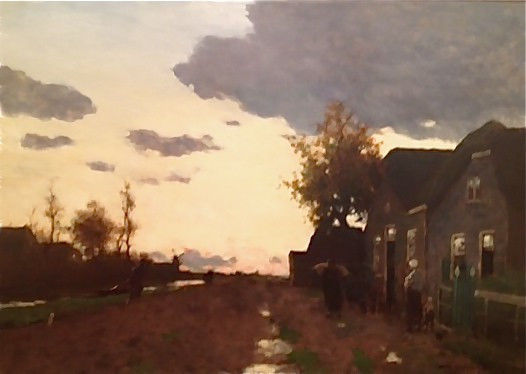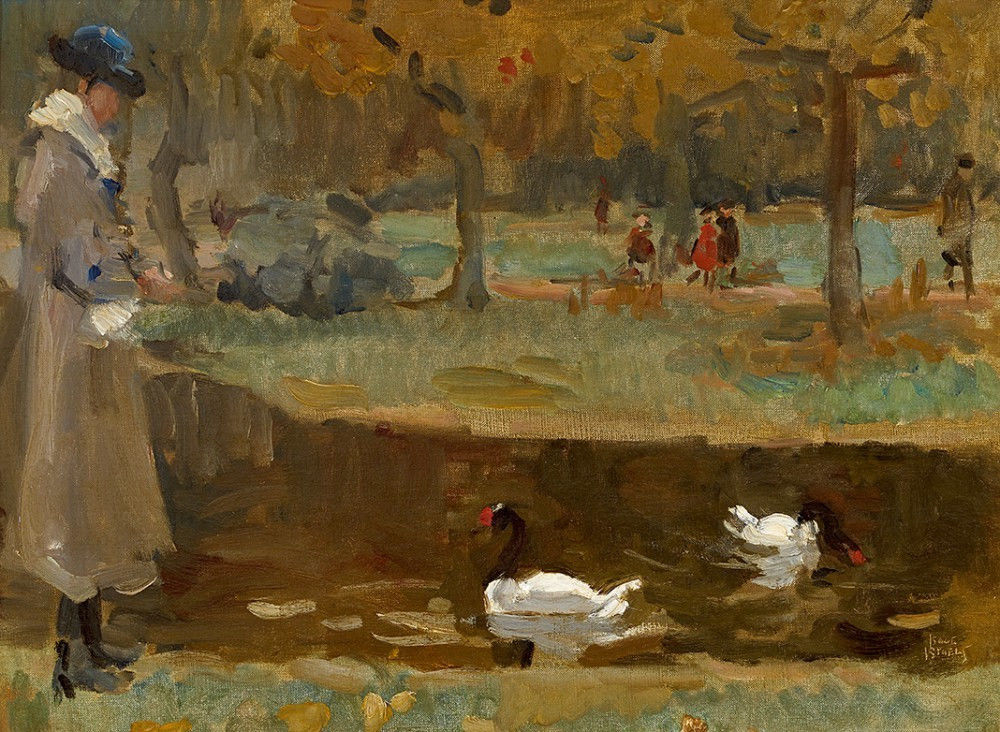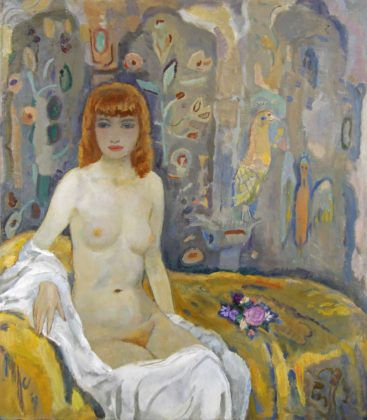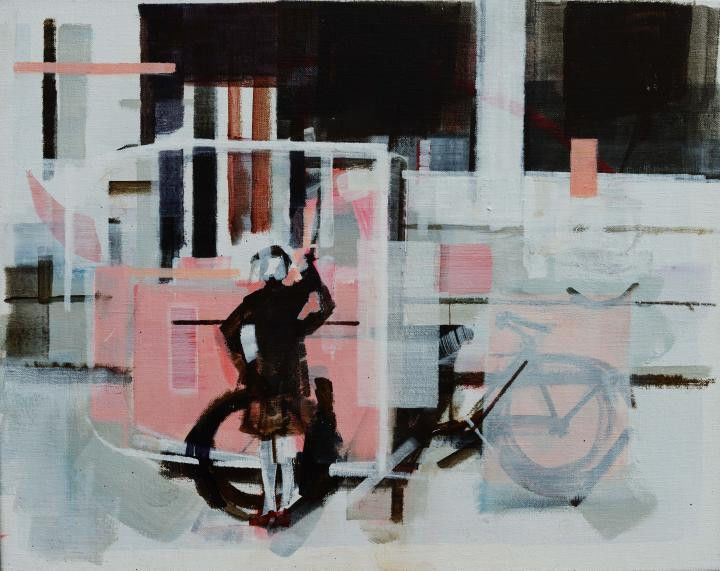Highlights Art Breda 2017
Art Breda is one of the most important annual fairs for art, antiques and design in the Netherlands. The 2017 edition runs from May 7-14 at the former Breda's Museum. Celebrated art and antique dealers from the Netherlands, Belgium and Germany are participating in the fair, which offers 17th-20th-century paintings, contemporary art, Asian art, Art Nouveau, Art Deco, jewellery, clocks and prints. Let us show you five marvellous pieces from around the stands.
William Degouve de Nuncques’ favourite time to paint was at night. The symbolist artist, belonging to the Belgian avant-garde group Les XX, created numerous nocturnal scenes during the 1890s. Among his subjects are illuminated houses or villages, rowing boats sailing across a desolated canal and eerie forests. His Soir à Boitsfoirt (Header image) is of the Belgian village Boitsfoirt and is painted with vivid blues, conveying a rich and mysterious atmosphere. Degouve de Nuncques’ has applied some vibrant golds to the outlines of the houses, the shore and the mountains, enhancing the scene and projecting a magical effect.
1. Hendrik Johannes Weissenbruch, Impressionist Landscape (Falling Evening), 1898, available at Peter Pappot Art Gallery.
Hendrik Johannes Weissenbruch, a prominent artist of The Hague School, is noted for his polder landscapes: bearing vibrant and cloudy skies. According to Weissenbruch, “sky and light are the great magicians. The sky determines what the painting is. Painters can never look at the sky enough.”
This idea is represented in his Impressionistic Landscape (Falling Evening) (1898, fig. 1) which provides a view of a lovely country road with various farmhouses under a large sky. The clouds are rendered with pale blues and pinks, while the countryside is portrayed with a warmer colour palette of reds and browns. Weissenbruch reminds us that the sky is in control, as his palette conforms to the gentle light of the falling evening.
2. Isaac Israels, Feeding the Swans in the Hague Zoo, 1917, available at Kunsthandel Dolf D. van Omme.
Isaac Israels is renowned for his depictions of streets, cafés, dance halls, theatres and parks. In his painting Feeding the Swans in the Hague Zoo (1917, fig. 2) we see a fashionable woman to the left, gazing at two swans in the water in the The Hague Zoo. In the background, four people are discernible who are walking amidst leafy trees. Here, Israels’ style is characterised by a muted colour palette and loose brushstrokes which reflects his admiration for the French Impressionists, especially Manet and Degas.
3. Jan Sluijters, Red haired nude against decorated background, ca. 1934.
From the moment Jan Sluijters made his first studies of models at the academy, the female nude has been an important theme in his oeuvre. His vividly painted ladies are usually half dressed in translucent gowns or veils, as demonstrated in his work Red haired nude against decorated background (1934, fig. 3). The painting portrays an elegant nude sitting on a divan that is covered with a bright yellow garment. Her red lips and expressive eyes show the influence of his contemporary, Kees van Dongen.
Interestingly, Sluijters’ nudes were not void of criticism in the early 20th century. In 1911 two portraits by the artist were withdrawn from an exhibition as they were considered 'offensive to the public.' Today we can only appreciate the delicate sensuality of the work and the artistic quality behind it.
4. Wessel Huisman, Pretty in the City IV. GrachtenGalerie.
Light and clarity are important features in the work of the Dutch contemporary artist Wessel Huisman.
This artist tries to capture so-called “light memories” on canvas; different light effects on various locations, which he has been remembering since his youth. Huisman applies these effects to his paintings of urban landscapes. He also adds geometrical shapes to his works, suggesting depth and movement. Fascinated by light and light contrasts, Huisman had been using various shades of grey, black and white colours in his paintings for many years.
However, more recently he has employed other hues to specify the light’s atmosphere, like in his painting Pretty in the City IV (fig. 4). It depicts a sophisticated young lady standing in front of an ice cream barrow which is to a large extent composed of abstract shapes. The ice cream barrow is salmon-pink and stands out against the monochromatic background, in line with the jolly feelings associated with ice cream.
Header image: William Degouve de Nuncques (1867-1935), Soir à Boitsfort. Oil on canvas, 52 x 77 cm, private collection Brussels, available at Kunsthandel Studio 2000.





